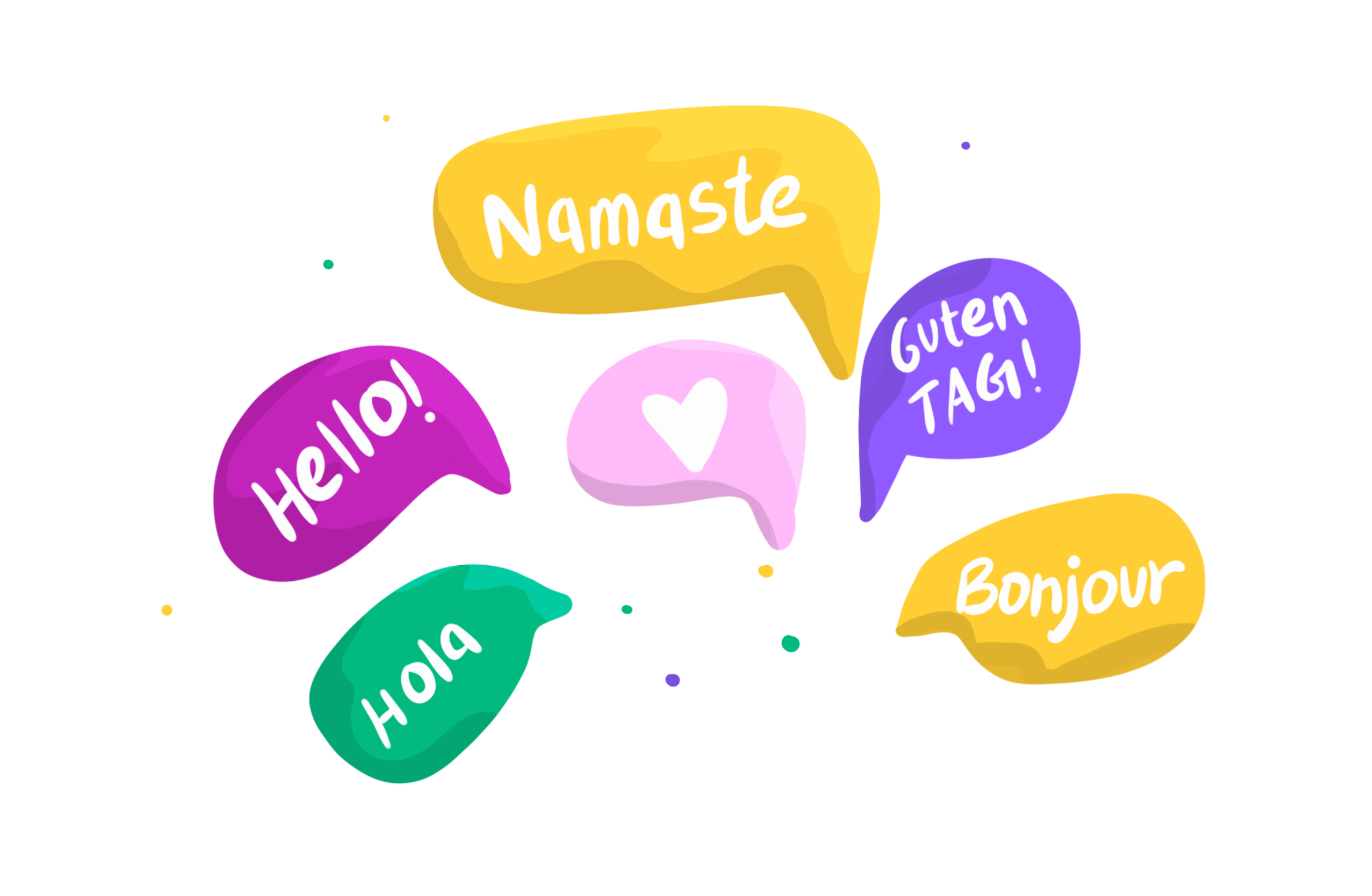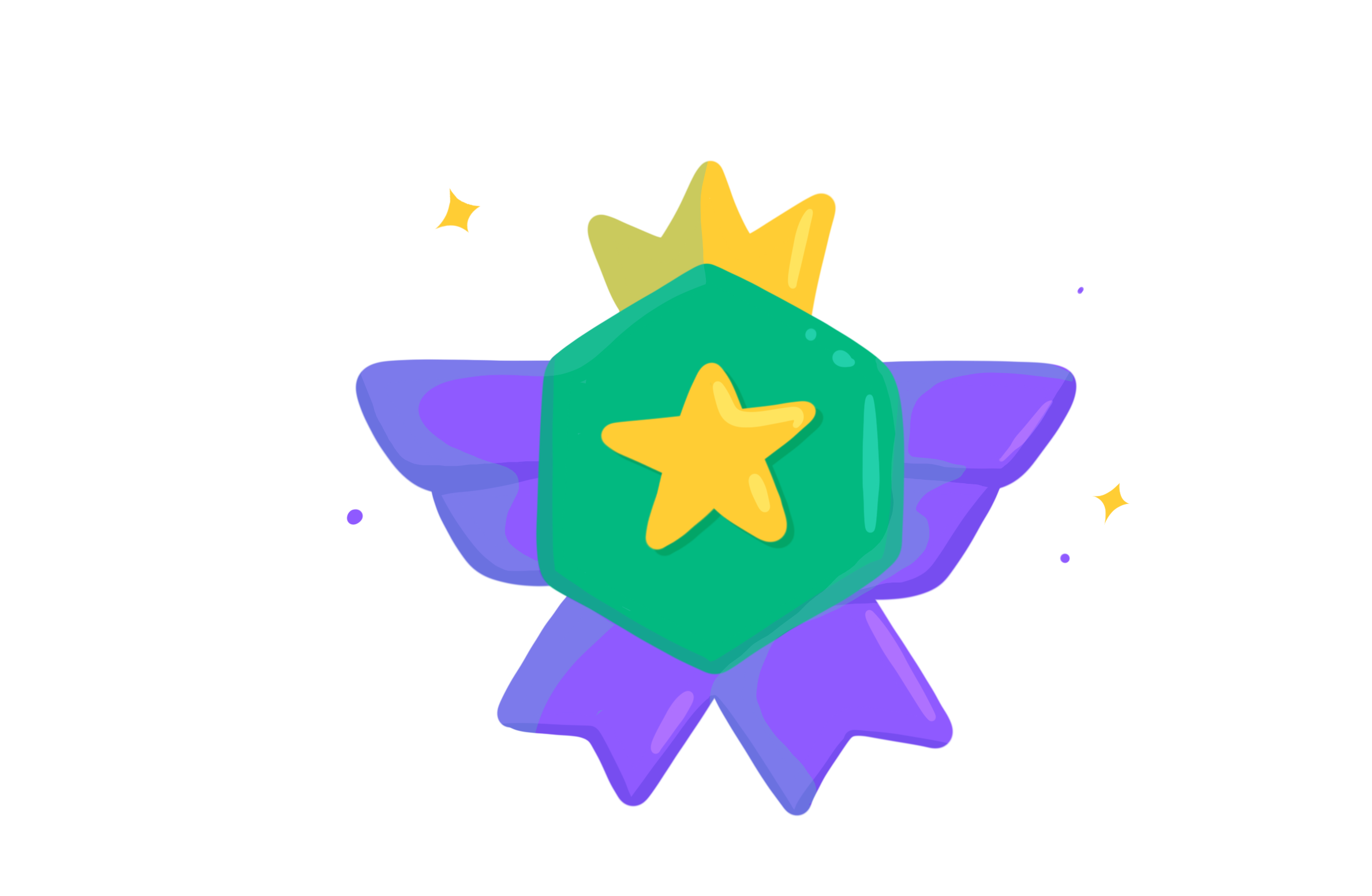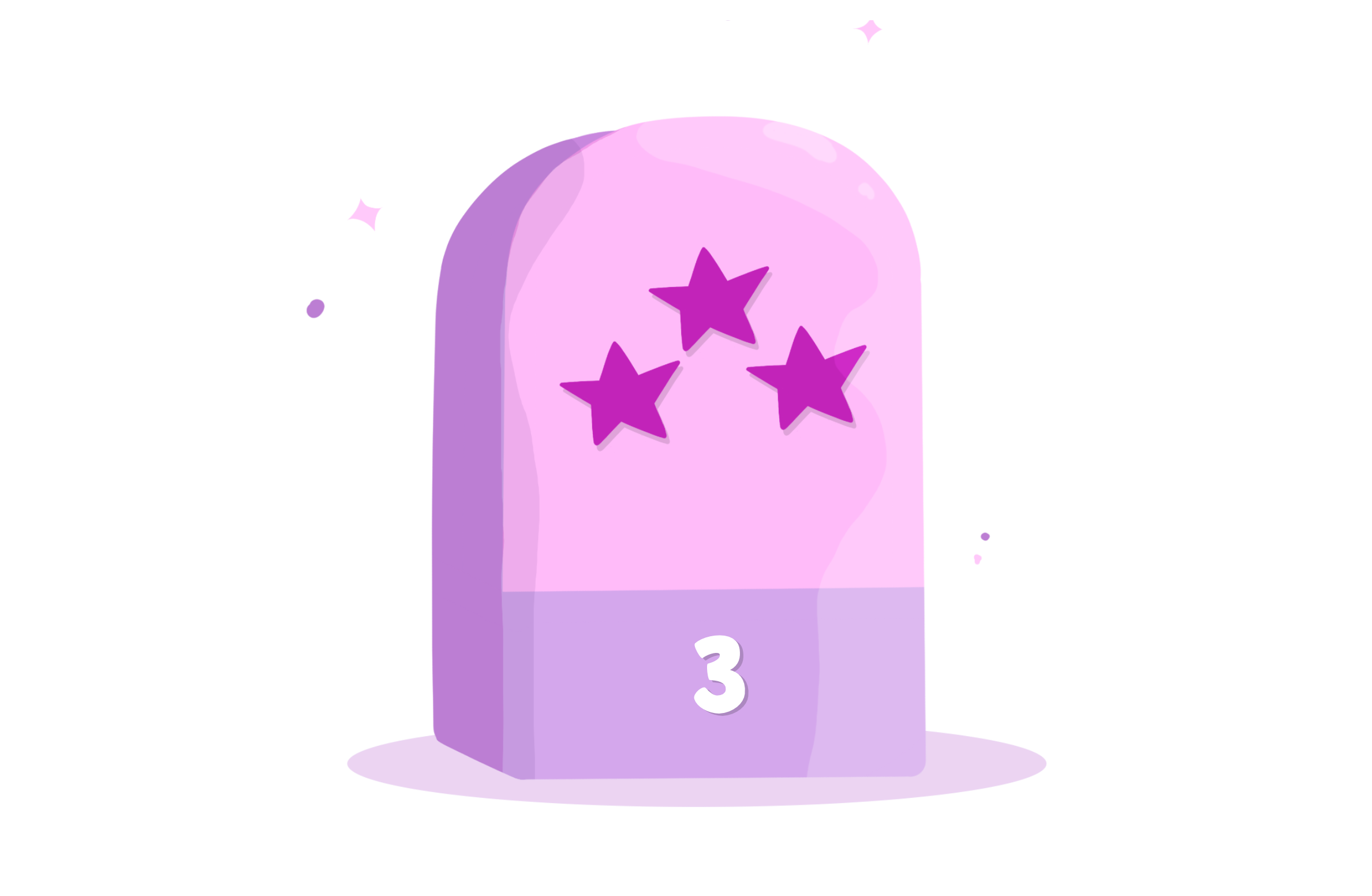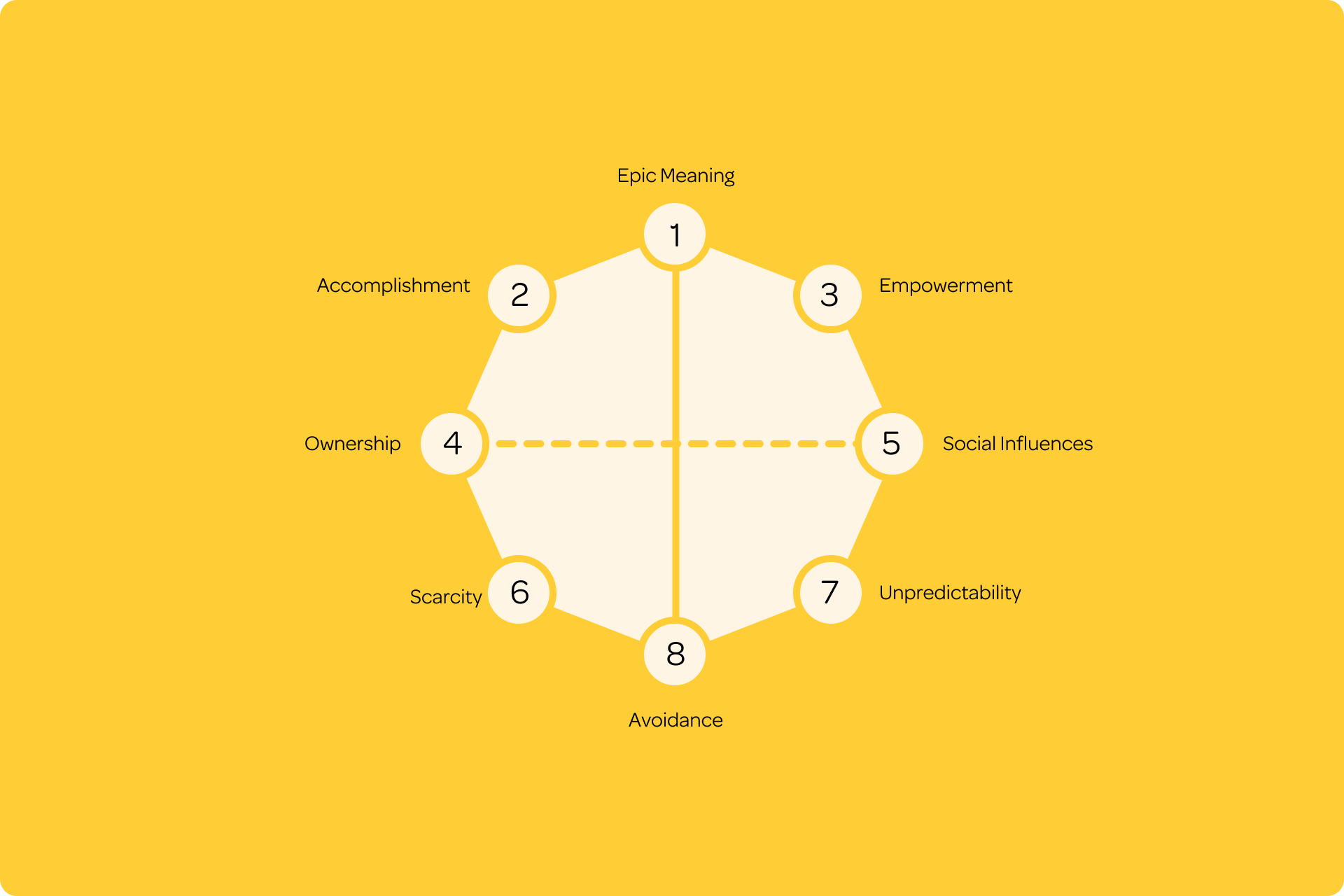How Rocket Learning motivated parents to become active participants in their child’s learning
Learner
Parents of children below the age of 6 from low-income families
Topic
Early Childhood Education
Format
WhatsApp Communities
Rocket Learning empowers parents of children under the age of 6 from low-income households to access high-quality, play-based early childhood education through technology.
Although all parents want to see their children succeed, parents in low-income households often lack the confidence, knowledge, and skills to participate in their child’s education.
In this case study, we explore how Rocket Learning is attempting to solve this large-scale problem by leveraging WhatsApp Communities that focus on building awareness, information, and motivation for their primary learners, the parents.
What’s Inside
Problem (2 mins read):
Parent as the missing puzzle piece
Process (5 mins read):
Meeting the parents where they were
Implementation (5 mins read):
‘AIM’ing high
Impact (3 mins read):
Empowered educators & caregivers at home
Parent as the missing puzzle piece
Problem
Education systems worldwide have been waking up to the realisation that quality education in the early years is critical for a child's future success. Strong evidence suggests that, in India, as in many parts of the world, quality education in the early years can enable communities to break from the shackles of poverty.
With the new National Education Policy (NEP 2020) emphasising early childhood care and education, the government-run child-care centres called Anganwadis have become the de-facto learning centres, particularly in rural areas. Despite the hours spent at Anganwadis, parents remain their children's primary caregivers and are a critical lever in the child’s learning process, especially in the early years.
This fact became further apparent during the COVID-19 pandemic. As schools closed and children stayed home, parents were suddenly forced into a more central role in their children's education. However, their own educational backgrounds and limitations of time and material resources left the parents lacking the confidence, skills and know-how needed to support the child’s learning.
This was the context in which Rocket Learning’s solution was born. But before that, let’s take a step back.
Who were these parents? And what were their struggles?
Here’s what Rocket Learning learned about the parents:
Their children were under the age of 6 enrolled in the government-run Anganwadi system.
They were first-generational learners with educational qualifications ranging from passing 8th grade to a Master’s degree.
They cared deeply about their child’s growth and development.
Confidence Barriers
Many parents in these rural areas had received only basic education in their native language and failed to read & write themselves, let alone support their children to learn to read & write. They lacked the self-belief to engage in their child’s learning experience.
Financial Limitations
These parents frequently grappled with limited financial means, making it challenging to afford private preschools, toys or educational apps.
Time Constraints
With most parents engaged in labour-intensive occupations, their daily routines left little or no time for engaging in their child’s learning journey.
Belief & mindset about early childhood
There was a rampant belief among the community that play did not equal learning. They often focused on teaching children to read and write letters and to memorise words and poems.
Amid these constraints, most existing parent-focused interventions did not meet parents where they were in several aspects, including aligning with their aspirations, addressing their mistaken beliefs and mindsets, and providing the desired information through the proper delivery mechanisms.
What did Rocket Learning do about this? How did they arrive at a solution?
Here’s what happened next.
Process
Meeting the parents where they were
Here’s what Rocket Learning did:
-
A crucial aspect of their strategy was to leverage and build upon existing government infrastructure instead of creating a parallel and possibly contradictory eco-system of learning for the child. In order to do this they partnered extensively with various state governments. Working with Anganwadi centers and Anganwadi workers (AWW) allowed Rocket to ensure that their program would reach a large number of parents and children at once.
Within this collaborative framework, it became essential to identify where the parents were situated, in terms of their physical presence and their awareness and trust in the existing Anganwadi system.
-
Given the scale of the problem, using the technology-based remote distribution model became important. An offline intervention would require considerable human effort which would be difficult to resource, monitor and control at scale. Through research, Rocket had learned that only three apps were near ubiquitous - Facebook, YouTube and WhatsApp. The research further showed that 70% of Indian households were reported users of WhatsApp which was significantly higher than the usage on any other social media or learning app.
Considering these and other facts such as target users (parents) did not always have the internet bandwidth and phone storage to download and use an additional application, they decided to leverage WhatsApp, specifically WhatsApp groups, to deliver the program. This decision was further supported by the observation that Anganwadi workers were already using WhatsApp groups to communicate with parents during the COVID-19 pandemic.
-
Choosing to deliver the program via WhatsApp brought several design constraints for the learning experience design at Rocket Learning. Below are a few examples of the constraints and the resulting design choices.
While an individual or one-on-one learning program would allow for higher personalisation, it would also reduce the scope for leveraging the existing Anganwadi infrastructure. On the other hand, using WhatsApp groups would enable the program to activate social learning behaviours for multiple users at once, ensuring habit-building and behaviour change for adult learners.
Delivering content on WhatsApp groups meant that the content had to be designed considering device, internet and socio-economic constraints. Some examples below:
Videos and voice notes were preferred over text to support parents with low educational levels.
File size had to be limited to 5 MB, resulting in low-res video footage of not more than 2 minutes.
Digital annotation worksheets had to be self-explanatory through solved examples.
Materials referenced in the activity had to be typically present in the home environment, such as utensils, vegetables, cloth, etc.
-
Two key pilots were conducted during the initial stages:
The first pilot was relatively small in scale, covering 10-15 Anganwadis in partnership with a non-profit organization.
The second pilot was conducted across all Anganwadis in Aurangabad district in partnership with the Integrated Child Development Services (ICDS) department.
These pilots helped in testing and refining the project in its early stages.
-
Close observations of group responses, telephonic interviews and limited field visits revealed that parents were eager to receive the content and enjoyed doing the activities with their children and sending back photos and videos to the group. The parents also looked forward to the public acknowledgement of their work by the members on the WhatsApp group, which they often believed was the Anganwadi worker or a government representative.
The early signs were encouraging and set the Rocket Learning team off on a series of experiments.
-
Rapid and large-scale A/B testing of product and design ideas was critical to Rocket’s product design process, especially given the inability to visit users and conduct in-person observations. Once the pandemic had passed, various teams began simultaneously conducting frequent prototyping workshops to observe and understand specific user preferences and behaviours.
Arriving at a structure: Building the AIM approach
Through the initial phases of user research and iterative product design, it became apparent that organisations would have to address three critical aspects to bring about positive behaviour change successfully. Although the model is still growing and evolving, much of the work is rooted in the organisation’s AIM framework. What does AIM stand for?
Awareness: Build awareness among the learners and the ecosystem about the need and importance of Early Childhood Care and Education (ECCE) and its role in transforming the child’s life, making it aspirational for these stakeholders to invest time and energy.
Information: Provide the learner’s information (what to do, how to do it, when to do it, how often, who can do it, etc.) in a relevant and accessible manner.
Motivation: Break down a bigger goal into smaller, achievable units and make it possible for learners to experience success on these by acknowledging their efforts and reflecting it to them.
The AIM Approach in Action
This stage involved the following steps:
Capture the learner's beliefs, mindsets and practices across the three sections of AIM.
Contrast it to the beliefs, mindsets and practices needed for them to succeed in their learning goals.
Define clear metrics and track user progress along these goals.
Building the program journey
The program journey included four phases:
Coverage: Get the Anganwadi worker, parents, and the Rocket learning bot on a WhatsApp group.
Activation: Get parents to understand the group's purpose, register their child and send their first message on the group.
Engagement: Send daily bite-sized content in the form of videos and worksheets.
Retention: Ensure consistent engagement and retain them through nudges, rewards, and report cards.
Multiple stakeholders are involved in this process as shown below:
But what did the AIM framework look like in action?
Curious? Let’s dive deeper.
Implementation
‘AIM’ing high
1. Awareness
Rocket Learning was cognizant that its target was a particular parent segment that needed to make a significant trust buy-in.
To take the parent learners from point A to point B, they were exposed to various content and nudges during the activation phase of their user journey at Rocket Learning. Here was how they approached this:
Welcome the parents: On joining the group, the parents were sent a message along these lines “Welcome to WhatsApp Homework Group, your daily dose of activities to do at home!”
Set context: Onboarding videos explaining how the Rocket Learning program would enable them to support their children’s learning journey confidently.
Establish credibility: One or more videos of influencers explaining the role of ECCE and parental support through their own story.
Earn trust: Testimonials of other parents who experienced the program's value and how it had affected them and their children.
What did they learn?
-
The Anganwadi worker creating the group lent the initial credence to the program since the parents already knew and trusted her.
-
Hearing the message from an inspirational figure helped convince the learner of the program's legitimacy.
-
Providing parents a glimpse of how easy the program would be and examples of others, like them, who had succeeded enabled them to believe it was possible for them, too.
2. Information
The magic sauce was the content - retaining the learners and sending them the content in an engaging manner.
To take the learners from point A to point B, the learning content focused on providing the parent learners with straightforward and contextual content. Given the literacy and limited socio-cultural exposure constraints that the targeted caregivers are operating with, the content provided was designed and disseminated in the form of videos & images. Textual content was avoided entirely.
Here is how they ensured high engagement:
Clear call-to-action: Each content piece was followed by a call-to-action, transforming the learner’s interaction with the learning material from passive to active.
Bite-sized: All videos were downloadable, bite-sized, and 2 minutes long, with each file size of less than 5MB.
Example-led: Solved examples were provided to demonstrate the given exercises. The learners had to annotate digitally on these worksheets to solve them.
Here are screenshots of the content videos:
Learning Objective
Demonstration
Facilitation Tips
Calls to Action
For instance, in one worksheet - the learners had to match a real-life object with a shape by annotating on their phones.
Images of the (a) Digital worksheet (b) Received response are shown below:
What did they learn?
-
Technology (smart-phone access, storage space on phones, limited internet) and parent learners literacy levels influenced several of the design choices. However, viewing these as design constraints helped in reaching the learners who needed it the most.
-
Initially, when parents were required to learn a new skill such as ‘how to annotate’ or ‘how to shoot a photo or a video’, or using any complex instructions they were more likely to give up on the task.
They learnt these skills over-time and predictability in format and action helped reduce the cognitive load.
-
Ensuring that the time, effort and cost of preparing and doing the activity is relatively low, i.e. using easily available materials that can be gathered quickly to do short and simple activities. Call-to-actions (CTAs) were effective when they were minimal effort and valued consistency over perfection.
3. Motivation
While parents are deeply invested in the long-term success of their children, as learners, they, too, feel the need to be acknowledged and celebrated for the small wins.
Building on the Octalysis frameworks’ core drive of accomplishment, Rocket Learning leveraged report cards, rewards, medals and certificates to acknowledge parents and celebrate their wins.
Activation certificates: A certificate received by parents on completing their first activity.
Weekly report cards: Progress reports, which included day-wise smile emojis given to a parent based on completion. These report cards included information about all the individual users in the group, enabling social incentives.
Monthly medals: Gold, silver, and bronze medals were given to parents based on the total number of activities sent on the group in a month.
Activation Certificate
Progress report
Monthly medal
What did they learn?
-
Engagement on WhatsApp groups increased considerably when parents were provided with meaningful and relevant rewards, medals, certificates, etc.
-
Parents always looked forward to the two rewards: weekly report cards and super-5 certificates, which had a vital social element.
-
Parents enjoyed rewards that highlighted their child’s name or photographs. Similarly, children enjoyed receiving rewards with a higher potential for conversion to real-life rewards. E.g., Choco certificates.
-
Tagging the parents and sending personalised nudges encouraging them to participate helped build accountability.
Impact
Empowered educators and caregivers at home
Rocket Learning has empowered 100,000 educators to reach over 850,000 caregivers every day, impacting 1.75 million children across 8 states.
Through the implementation of 200,000 digital classrooms, education can now reach low-income communities, transcending geographical and socio-economic barriers.
“I go to my shop every morning and on returning, study with Farhan for an hour daily to finish his activities. With E-Pathshala I am aware of what is being taught and can revise at home. I strongly feel fathers should also step up and support the mothers with teaching their children. This way, the children will grow up motivated and interested in studies, knowing both parents are invested, and will also strive to do better!”
(Source: Firoze from Delhi, father of 4 year old Farhan)
Creating a holistic learning ecosystem
Enhancing Learning Outcomes
Children enrolled in the Rocket Learning program have consistently scored higher on learning outcome assessments. They have reached the top 30th percentile of their classrooms, reflecting a tangible and positive change in their educational journey.
Strengthening Parental Engagement
The program has not only impacted children but has also transformed parental engagement in education. The program has doubled the time parents spend with their children on daily learning activities. This increase in parental involvement is a testament to the program's ability to foster a collaborative learning environment at home.
Expansive Coverage in ECCE Classrooms
In a particular state, Rocket Learning’s program is at 80% coverage of Early Childhood Care and Education (ECCE) classrooms.
Active User Participation
30% of all users are active participants in the program, highlighting the significant impact of the program on children educators, caregivers and parents.
“Disha has become very active since starting to work with E-Pathshala. She is enthused to take up ownership of her daily activities such as worksheets, quizzes and puzzles and enjoys learning. Wherever she gets stuck, she asks me. She already dreams of becoming an IAS or an IPS officer and I am sure with a strong foundation built, she will do even better in school and make us all proud!”
(Source: Jyoti from Delhi, mother of 5 year old Disha)
Key ingredients of motivation used
Learn more about these ingredients in our Pocket Guide to Learner Motivation!
Personal Relevance & Contextualisation
WhatsApp as a delivery channel
Vernacular content
Designing for parents’ constraints of time, educational level
Relatable and accessible content
Celebration and Recognition
Activation Certificates
Weekly Report Cards
Monthly Medals
Goal Setting
Bite-sized activities
Demonstrated examples
Clear call-to-action for each activity.
Tools Used
Click on a tool to apply it in your context!








